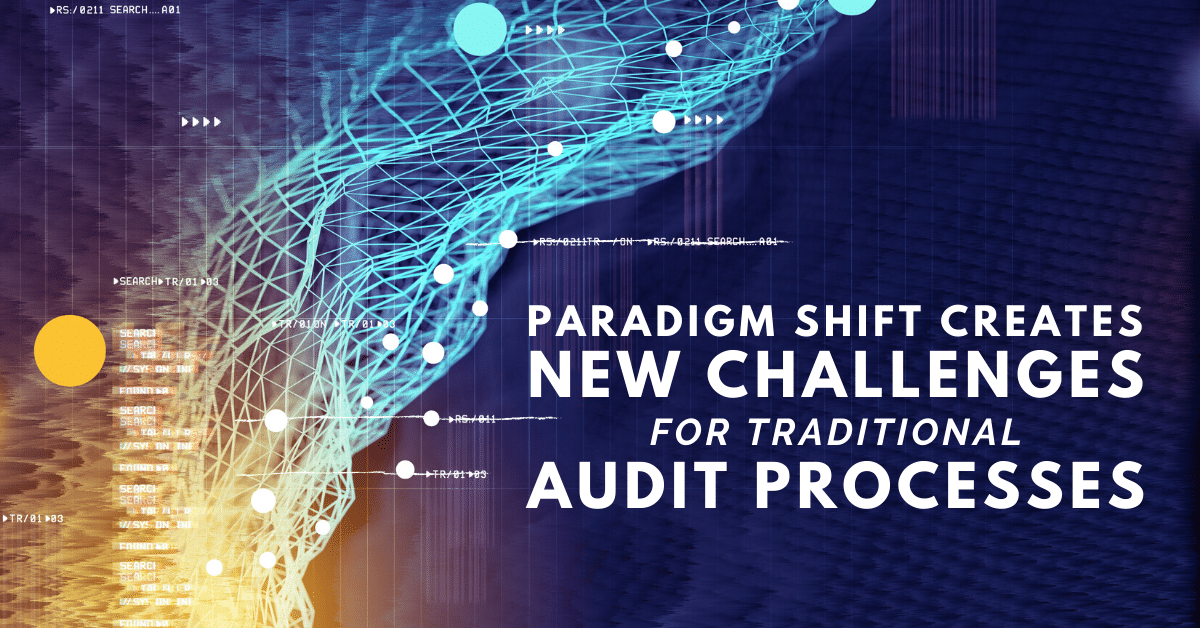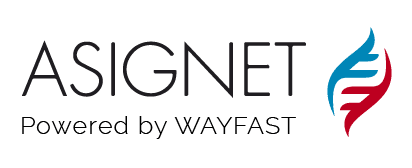Quick history and growth of the traditional audit:
Before TEM was even a word, there was audit. With roots back in the late 90s, some savvy entrepreneurs (mostly from the carrier space) recognized that the billing of telecom and data services were fraught with errors.
These were a mix of a confusing mush of state tariffs, custom tariffs, special contract provisions, and other creative contracting vehicles in part, enabling carriers to get around the requirements of the Communications Act of 1934 and the Telecommunications Act of 1996.
This was a way for them to offer preferential rates to their preferred customers without having to – as required by the act – to offer the same rates to everyone else. As a result of custom tariffs and highly customized complicated and entangled contracts, billing for the services was often incorrect, mostly in favor of the carrier.
So what started as a cottage industry of auditors painstakingly reviewing the applicable sections of the relevant tariff or contract and then manually analyzing what is billed to find errors (and there were lots found), has over the years fueled the growth and expansion of what is the modern-day TEM company.
Over the years, these companies have bolted on capabilities or acquired niche companies to expand their capabilities to mobility and other service types based on the establishment of enterprise mobility in the 2000s and explosion fueled by the introduction of the “smartphone”.
Since then, through the evolution of data networks, voice networks, IM, UC, Cloud, all the acronyms and “new” way of connecting and communicating, audit services has continued to play an important part in being a watchdog over the accuracy of carrier billing and the pursuit of refunds from historical errors.
Usually, execute using a revenue-share model, these activities represent zero risks to the enterprise and very little resource demands on IT staff. The only requirements are access to vendor billing and contracts and the auditor then goes off and does the audit.
Typically coupled to these “historical” audits (pursuing refunds for carrier billing errors to the extent available per the contract or the PUC/PSC for local regulated services), auditors will also identify opportunities for the client to reduce their recurring cost on a moving-forward basis.
These cost-avoidance recommendations are proposed to the client based on the auditor finding options to reduce the cost of services or from the optimization of mobile usage.
So what has changed today?
We have all seen the evolution and migration of enterprise IT networks from brick and mortar locked-in-a-room networks to hosted environments but still managed by IT staff to now hosting on cloud infrastructure.
This relieves the crippling capital cost that was involved in not only very expensive IT gear, but the very expensive staff to run them. It was not unusual for the cost of running an IT division to be one of the top three expenses (right off the bottom line) for an organization, a major incentive to move all of these non-value but essential costs from a capital expense to an operating pay-as-you-go model.
We have also seen the evolution of conferencing and enterprise IM services from calling cards to conferencing service providers to now the rapid growth of cloud conferencing services allowing users to easily and very affordably connect via voice or video as easily as making a video call on a smartphone with an app.
Zoom has become very commonplace as a result of the Coronavirus, as has many other conferencing apps and services. Enterprises too are also busy making plans to migrate their MPLS and other transport protocols to SD-WAN giving them significantly more flexibility to connect on any point-too-any point basis, rather than paying for and supporting fixed connections, which many times, are not effectively utilized.
In this new world, traditional TEM companies are increasingly struggling to adapt their systems to the new order.
The fundamental problem, particularly for fixed services, is that these systems were all built around the premise of receipt and processing of a carrier invoice which will have discrete charges for lines and circuits, and some rate applied to each of those.
The issue is that in a cloud-based world, there are very few lines and circuits that the enterprise is paying for. Typical cloud providers will provide scalable connections as part of their whole suite of cloud managed services (public, hybrid, private).
Further, traditional TEM companies are struggling to adapt their systems to vastly different billing parameters inherent in cloud billing. This type of service is built more around a consumption model or usage-based billing versus typical MRC.
Mobility on the other hand, while voice has now become a throw-away in terms of cost for the carrier, continues to bill for data usage on a consumption-based model.
In our opinion, as 5G continues to be developed and becomes more commercially available (still a few years away), mobile devices will become more mobile endpoints and the paradigm of how that usage is billed may well change as well.
In the midst of all these changes, niche audit firms or TEM companies with either an audit partner or an in-house audit team continue to do what they can with the remains of what nailed-down connections still exist in the enterprise space, as enterprises are still very much in the infancy stage of migration to the cloud.
This along with continuing to provide mobile optimizations is what remains of the traditional audit market. What they are all not well equipped to do, is effectively audit the cloud provided services.
Challenges with auditing cloud-based services:
- Cloud-based billing does not conform to a given billing standard. Different cloud providers may bill for the same services differently making it difficult to rationalize the details consistently across different providers.
- The billing is complex. Cloud services are usually sold on a subscription basis so, on any given month, different resources may be used at different levels that may trigger a different rate – just as an example.
- Services are usually sold on a metered basis but even here based on which contract that connection is provided under, the cost of a particular metered service may be different than the cost of an identical service that may be under a different contract – no contractual consistency based on multiple service order support the service.
- The use of servers and apps in the cloud can burst and then incur a different charge rate than a lower tier, so variables can also include the time metered for one of more particular applications, CPU time consumed based on queries, etc. rate of use of a specific service, total processing time, etc.
- Complexities of type of cloud platforms being used (iPaaS, SaaS, IaaS,) and level of cloud connectivity (public, hybrid, private, combo).
- Depending on the type of platform and service used, billing may be pre-paid, post-paid, one-time, recurring, etc.
Hopefully, you get a sense from this all, of how VERY different the billing is for cloud services versus traditional services. This complexity is what severely limits not only manual audits of services but also the ability of traditional TEM companies to validate cloud-based billing.
How can cloud-based billing be effectively audited?
The only way to deal with a quantum shift in automation is by using automation. There are a growing number of providers that sell what they term billing-as-a-service (BaaS) for third party providers of cloud providers. This of itself is not an audit tool but represents the growth of billing entities who are providing a somewhat cohesive view of cloud use to end customers.
For an actual audit of cloud usage, one that not only can validate the billing but also validate that the rates for each charge are contractually compliant requires a very high level of sophisticated automation.
Automation intelligent enough to manage the extraction of data points from the billing and other sources and sophisticated enough to handle a multi-dimensional analysis of data to focus on where there is either a) a billing error, or more importantly, and cost impactful b) where usage is not optimized.
This last area is where the biggest challenge lies because of the very complex nature of how services are consumed and billed, traditional audit approaches – either with an audit firm or with a traditional TEM company – are just not designed to effectively analyze and identify what could be very significant savings.
Examples of the areas that could be analyzed for savings include:
- Overall usage of bandwidth for all users as compared to the bandwidth being paid for. Over a usage cycle, this will identify over/under capacity issues.
- Secondary and tertiary, or overflow trunk utilization. This can identify how effectively routes are engineered
- Utilization of each cloud service type along with multiple parameters (enterprise, divisionally, location, department, user, etc.). This will allow for a measurement of the consumption of each service or product.
- Utilization of cloud provider resources (storage, CPU, access, etc.) by each organizational layer. Again, a measure of how much ‘overhead’ is being consumed at each layer.
The measurement of these activities presumes a layer of automation sophistication that exceeds traditional audit capabilities that would be focused more on comparing billing to the contract rate for compliance.
What value can “true” RPA deliver?
Here is where “true” RPA starts to drastically differentiate itself in being capable of pulling data from other sources such as server logs, etc. to provide a more sophisticated analysis of usage patterns.
We say true RPA because many providers are latching on to the RPA bandwagon when in fact, their reality of RPA is nothing more than pre-existing SQL scripts used to passively pull a file from a carrier portal – the same stuff in a new wrapper.
The simple truth is that their systems are not architected to integrate RPA as native functionality. Some of the capabilities and benefits these new solutions can provide include:
Bandwidth usage management:
- Passively collect bandwidth usage directly from the server or server utility.
- Compare this to the billed usage from the carrier or biller to validate billing accuracy.
- Compare the billed rate to the contract for that service based on a unique identifier or other codes.
- Flag variances and either report or initiate an automated audit claim.
- Analyze traffic flow on configured routes (dependent on service package subscribed to).
- Based on traffic on each route, recommend changes to optimize the least cost while maintaining critical criteria (e.g. COS) based on traffic attributes and the cost of each route.
- Custom reporting on traffic and cost optimization savings
Application utilization management
- Passively collect usage data for each cloud application being used by the enterprise (O365, Salesforce, Concur, Teams, etc.)
- Analyze usage for each application against:
- Contract rates
- License utilization
- Billed rate
- Route analysis
- Identify variances in cost
- Identify utilization optimization of service types and licenses
- Identify usage analysis optimization opportunities
- Identify route optimization opportunities
- Initiate automated actions based on pre-defined client business rules as necessary
- Customized reporting based on client-defined business rules
Cloud Provider Resource Management
- Analysis of the usage of host provider resources
- Validate against contractual and billing rates
- Identify variances in cost versus usage
- Potentially compare rates across different providers for like services presenting a dynamic real-time comparison of cost
- Customized reporting based on client-defined business rules
Benefits that Asignet can bring to automating the audit of IT cloud and other expenses (all fixed and mobile)
With RPA a native part of its Wayfast platform, Asignet is unique in that it is the only provider that has truly operationalized RPA level automation into its architecture and processes. This provides a level of flexibility, integration, and configuration capabilities that re-defines the ability to collect, process, analyze, react, respond and report on any data point, from any platform, in any format and present that all in a single holistic management view.
Today, Asignet has built and deployed thousands of automated workflows executing a very wide variety of actions for our clients in all verticals globally. Our capability to dive as deeply into ITAM, ITM, cloud, traditional fixed and all mobility type services and devices, puts Asignet in the unique position to address specific client requirements in a highly customized manner.
About Asignet:
Asignet (www.asignet.com) provides a proprietary cloud-based aPaaS platform – Wayfast (www.wayfast.com) that provides the architectural backbone of a set of highly flexible solutions that are currently backed by 11 global patents and provides a single comprehensive platform that seamlessly and dynamically ties all aspects of IT assets, usage and cost into one holistic view.
Built as a rapid application development (RAD), low-code development platform, Asignet is the only provider that fully integrates robotic process automation (RPA) as the technological means to easily build and deploy thousands of workflows to drive thousands of automated activities, integrating with any other system and making intelligent decisions or executing intelligent actions based on an analysis of the data being collected. Offering a full suite of highly configurable ITAM, ITSM, UCaaS, and a full suite of technology expense management (TEM) solutions and services.






